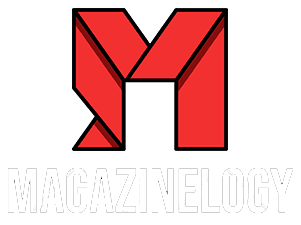Staying current in the tech world requires proactive measures. Online courses, certifications, and attending conferences provide avenues for continuous learning. Networking with professionals in the industry fosters collaboration and opens doors to new opportunities.
Behind every technological breakthrough are individuals who dared to dream and innovate. Exploring success stories in the tech industry provides insights into the journeys of pioneers. From overcoming failures to achieving milestones, these stories inspire aspiring tech enthusiasts. The synergy of diverse perspectives fuels creativity and innovation.

How to Stay Updated in the Technical World
From artificial intelligence to blockchain, the tech landscape is a dynamic space that requires individuals to stay updated and adapt. Staying current in the tech world requires proactive measures. Online courses, certifications, and attending conferences provide avenues for continuous learning. Networking with professionals in the industry fosters collaboration and opens doors to new opportunities.
Behind every technological breakthrough are individuals who dared to dream and innovate. Exploring success stories in the tech industry provides insights into the journeys of pioneers. From overcoming failures to achieving milestones, these stories inspire aspiring tech enthusiasts. In the realm of communication, technical writing holds a special place. It serves as the bridge between complex ideas and their practical application. Let’s delve into the intricacies of technical writing and understand its significance.
Technical writing demands absolute clarity. Ambiguity has no place, and precision is key. Every word is chosen meticulously to convey information accurately. Understanding the audience is paramount. A technical writer tailors the content to meet the comprehension level of the target audience, whether they are experts or novices. Being concise without sacrificing essential details is an art. Technical writing thrives on presenting information succinctly, making it easy for readers to grasp.
Types of Technical Writing
In the vast landscape of technical writing, various forms cater to different needs. Instruction manuals guide users through processes, while user guides offer comprehensive insights. Technical reports delve into in-depth analyses, and FAQs address common queries. Understanding the end-user is the foundation. A technical writer identifies the needs, preferences, and expectations of the audience to tailor the content accordingly.
Thorough research is the bedrock of technical writing. Accurate and up-to-date information forms the basis for creating content that stands the test of scrutiny. Creating an initial draft and revising it rigorously ensures that the final product meets the highest standards of clarity and accuracy.
Balancing technical terminology is challenging. Technical writers must strike a balance, ensuring that the content is accessible without losing its technical essence. Providing enough detail for comprehension while maintaining simplicity is a delicate equilibrium. Achieving this balance is crucial in effective technical writing. Revision is an ongoing process. Ensuring that the content remains clear and concise requires constant refinement.
Technical writing in essence
The art of translating complex concepts into understandable information. In a world driven by technology, the role of technical writing has become increasingly pivotal. Technical writing is more than just conveying information; it’s about clarity and tailoring content to the audience. The ability to communicate complex ideas in a clear and concise manner distinguishes exceptional technical writers.
From instruction manuals guiding users step-by-step to detailed technical reports, the scope of technical writing is diverse, catering to various communication osint technical needs. Clear communication is the cornerstone of technical writing. Precision in language ensures that the audience grasps the intended message without ambiguity. Technical writers delve into comprehensive research, ensuring the accuracy and relevance of the information they present.
The drafting process is not a linear one. Iterative revisions are essential to refine content, enhancing clarity and overall quality. Technical writers face the challenge of balancing the use of technical terms. Striking a balance between precision and accessibility is crucial. Finding the sweet spot between providing enough detail for comprehension and avoiding overwhelming the reader is an ongoing challenge. The revision process is not just about correcting grammar; it’s about ensuring that the content remains clear and concise. In a world saturated with information, technical writing emerges as a beacon of clarity, unraveling the complexities of technology through precise and accessible communication.
The Essence of Technical Writing
Technical writing is an art form that marries clarity with precision. It goes beyond merely conveying information; it’s about tailoring content to the audience, ensuring that even the most intricate details are comprehensible. From user manuals guiding individuals through step-by-step processes to detailed technical reports illuminating complex analyses, technical writing takes on various forms to suit diverse communication needs.
Fundamental principle of technical writing lies in its clarity. Precision in language ensures that information is conveyed accurately without room for ambiguity. Technical writers are meticulous researchers, delving deep into subjects to present information that is not only accurate but also relevant. The drafting process is not a linear journey but an iterative one. Constant revision is essential to refine content, ensuring it meets the highest standards of clarity.
Challenge lies in striking a balance between using necessary technical terms and ensuring content remains accessible to a broader audience. Technical writers walk the tightrope of providing enough detail for comprehension without overwhelming the reader with unnecessary intricacies. Revision is not merely a correction process; it’s a quest for enhanced clarity, where each iteration refines the content further more

Leave a Reply